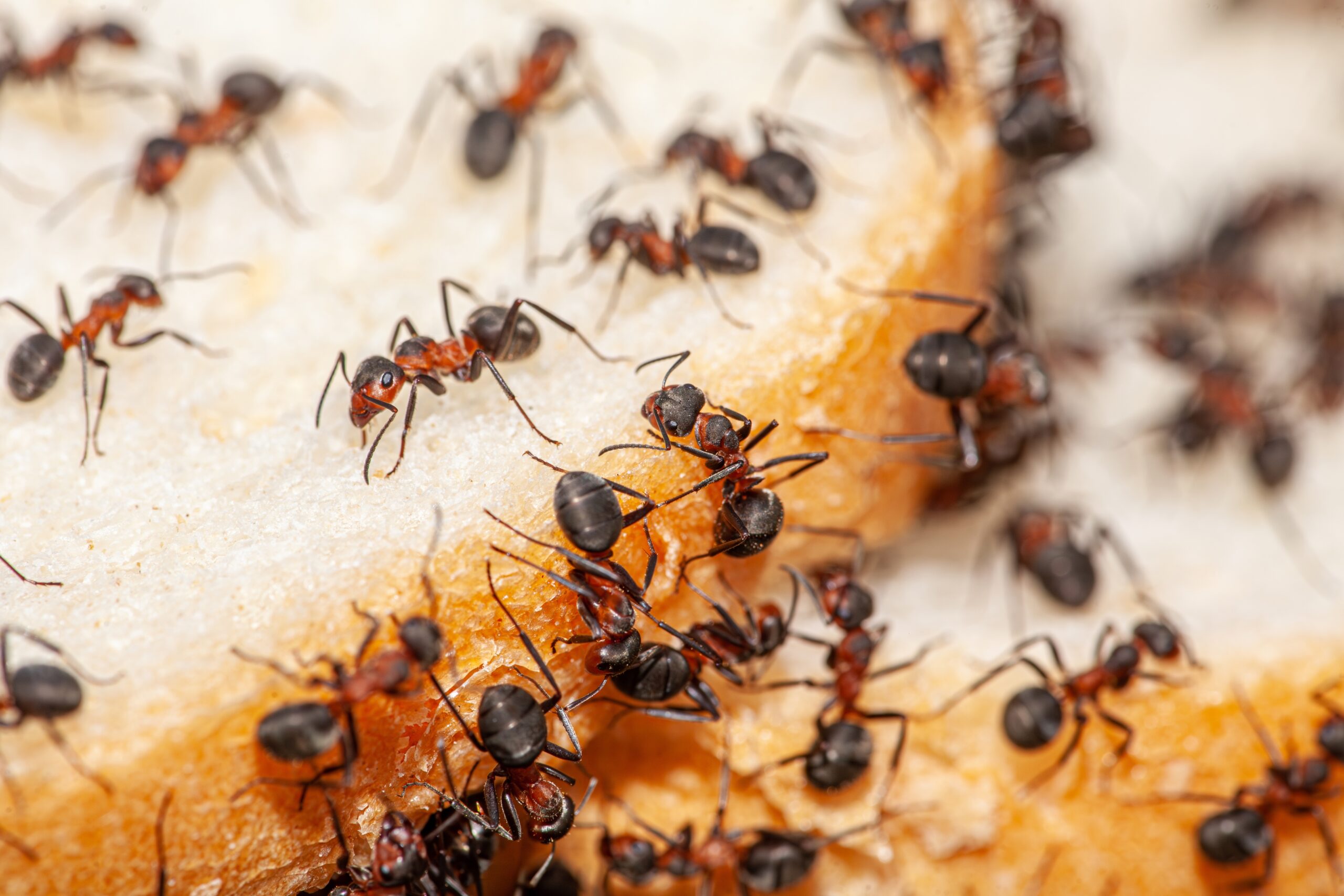Summary: It’s important to know which pest is invading your home in order to efficiently treat the problem. This blog discusses the 7 main categories of household pests and the issues they cause for homeowners. Each group’s common signs and featured pests are explained in its own section. The categories of household pests are: rodents, insects, eusocial insects, pantry insects, bloodthirsty insects, flies, and garden insects. Romney Pest Control efficiently treats for all categories of household pests.
The first step to solving any pest problem isn’t reaching for the pesticide, as appealing as that sounds. It’s figuring out what type of critter is actually invading your space! It’s important to know your pest because different pests require different treatments. If you’re hiring a pest control professional (like Romney!), any information you can give them before the service helps tremendously.
You don’t have to know the exact species and scientific name of household pests in order to treat them. But it is helpful to know if the bugs you’re seeing are more worrisome, like bloodthirsty pests. Let’s go on a brief journey of the 7 main categories of household pests to learn the general signs and characteristics of each group!
Rodents
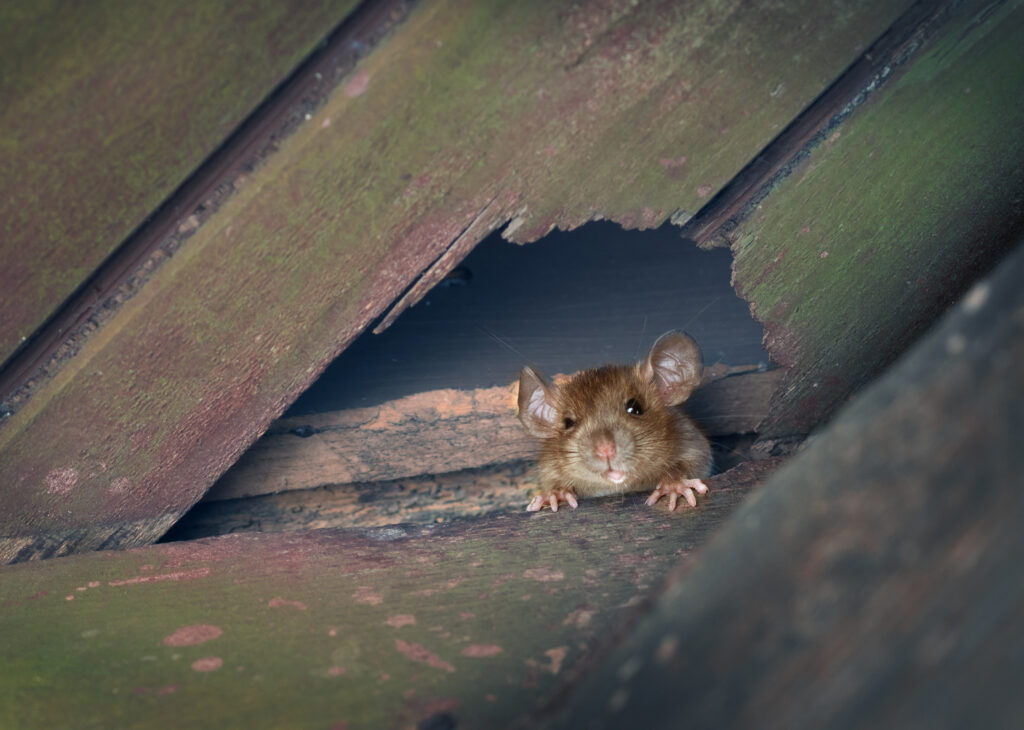
Common Signs:
- A musty odor
- Squeaking or scurrying sounds
- Gnaw marks on walls and items
- Dark droppings (round or rice-shaped)
- Random shredded paper or fabric
- Your dog or cat acting strange in certain spots of the house
Rodents are larger, louder, and carry more diseases than most household pests. They transmit bacteria through their droppings and feet, which leads to the transmission of diseases such as hantavirus and salmonellosis. Mice and rats are both unpleasant, but there are some important differences to note. Mice have larger ears and longer tails, while rats are longer and have pointed snouts. Rats either nest near the ground or up high (mainly roof rats), but mice tend to always stay on the ground. Both rodents reproduce quickly and often, so it’s essential to solve your rodent problem ASAP.
Insects
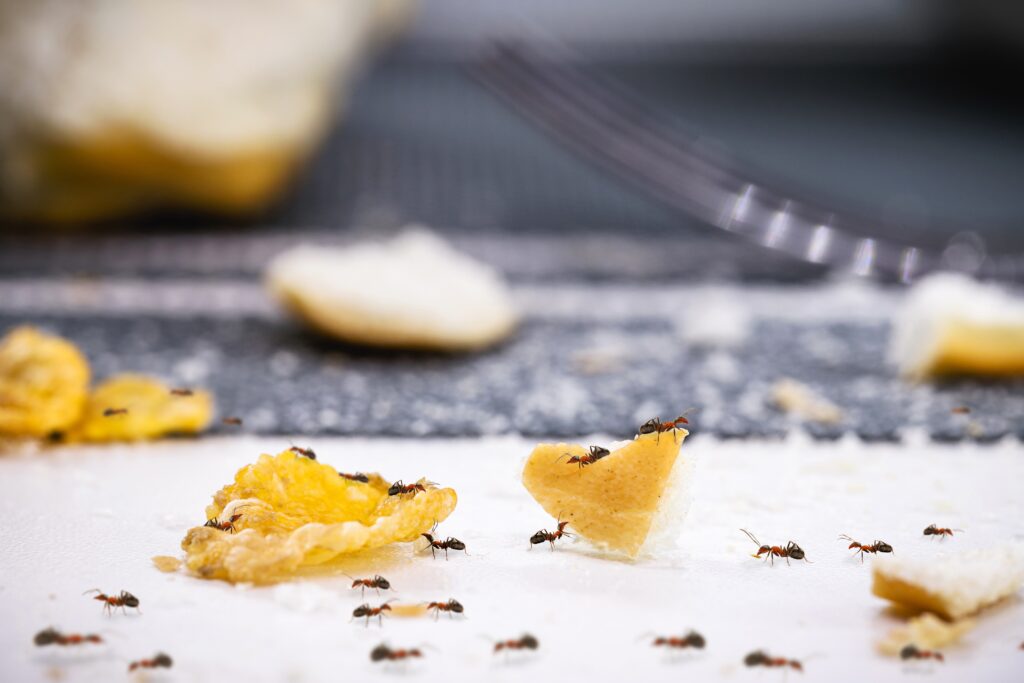
Common Signs:
- Shells
- Tiny droppings
- Small eggs/egg cases
- Tiny, jagged holes in containers, papers, fabrics, etc.
- A sudden increase in spiders around the home [they love the food!]
The insect category is the largest on our list, simply because there are over 90,000 species in the United States! We’ll get into the insect sub-categories later, but for now, it’s important to note that insects cause all kinds of trouble when they invade. From chewing through wooden structures (termites) to devouring our plants (aphids) to ruining our food (ants), insects aren’t a fun houseguest at all. Every type of insect requires a different treatment method because of their diverse preferences and behaviors. You can’t eliminate a roach family with the same methods as a termite colony!
Eusocial Insects

Common Signs:
- A nest or hive anywhere in the house/yard
- Many insects of the same species in one area
- Swarmers hovering around certain areas (to find nesting sites)
Typical Pests: ants, bees, hornets, wasps, yellow jackets, termites
This sub-category is a major scare for some people, and for good reason. Some of these insects damage our houses and buildings, others attack anyone who gets close to their nest, and still others do both! Eusocial insects live in colonies that are created by queens and aided by the thousands of workers. If you see one eusocial insect, there’s probably a lot more hidden somewhere close. It’s tempting to spray the entire nest with a store-bought spray as soon as you see it, but we recommend leaving eusocial insects to the pros. Eusocial pests — especially stinging insects — are extremely defensive and won’t allow any failed treatment attempts go unnoticed.
Pantry Insects
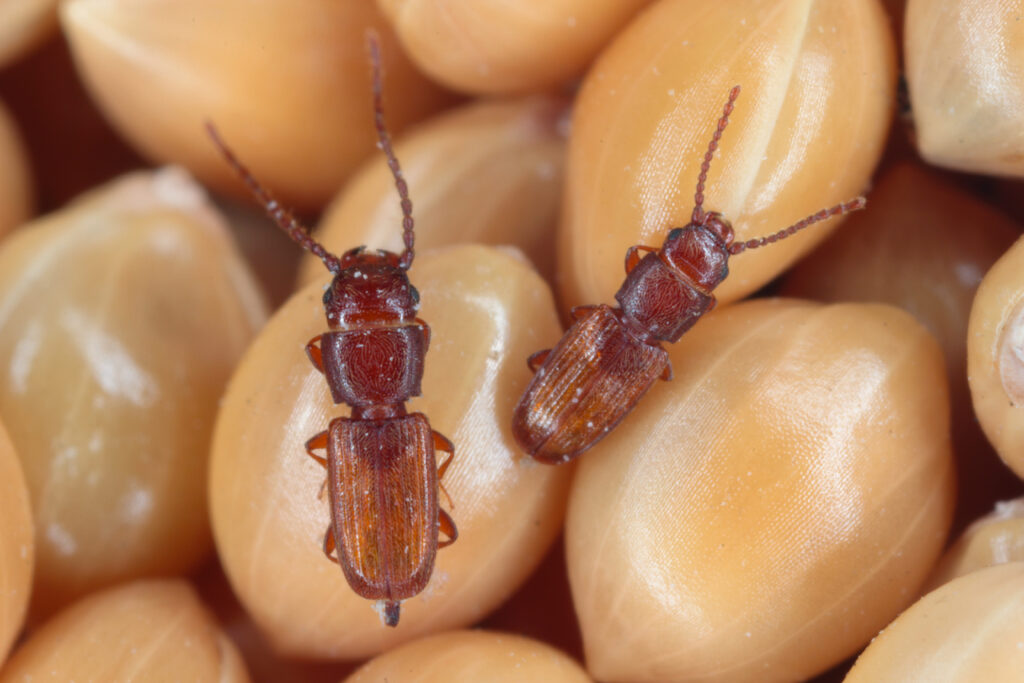
Common Signs:
- Webbing in pantry/cabinets
- Tiny holes in food containers
- Droppings in pantry/cabinets
- Insects inside food containers
- Larvae and/or eggs around stored food
- Random wings or dead insects around stored food
Typical Pests: Indianmeal moths, weevils, flour beetles, sawtoothed grain beetles
Pantry pests aren’t the most dangerous on the list, but they are definitely one of the most annoying! These household pests invade sealed food products by chewing through the plastic or cardboard. They lay their eggs in the food in order to give their offspring an immediate food source, so any food that’s invaded by pantry pests likely has a lot of hidden eggs deep inside. Talk about finding a surprise in your cereal! The common targets for these pests include pasta, flour, cereal, rice, nuts, sugar, oats, and spices. We suggest storing all of your pantry staples in airtight containers to protect your food from these ravenous pests.
Bloodthirsty Insects
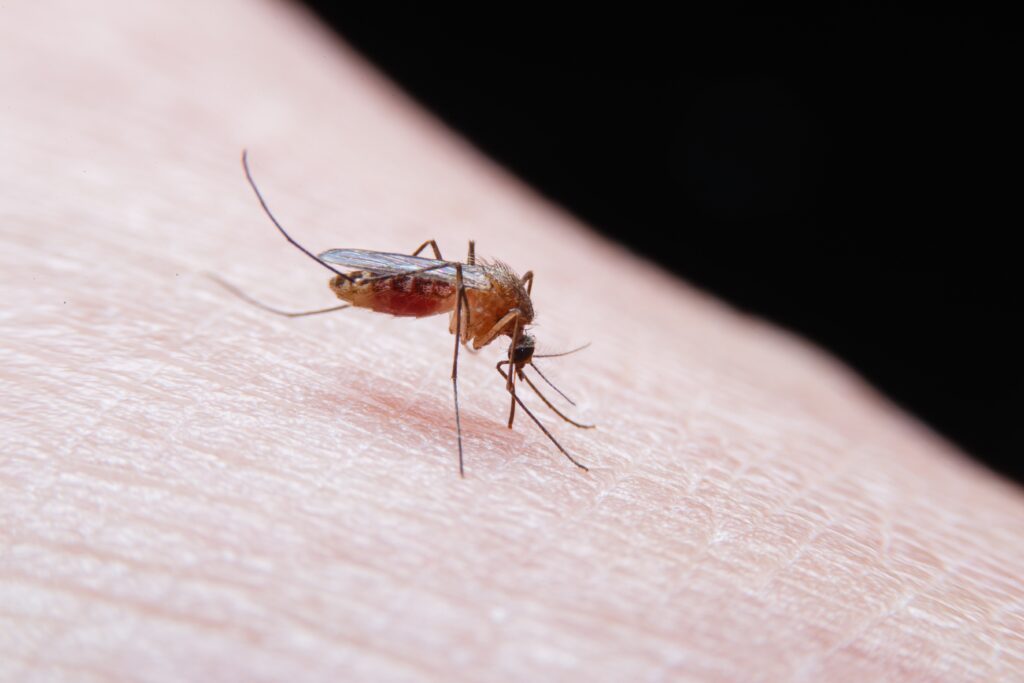
Common Signs:
- Tiny insects in beds or on furniture
- Pets scratching themselves more often
- Red, itchy, irritated bites on people or pets
- Rust-colored marks in beds or on furniture
- Insects repeatedly landing on people in the home
Typical Pests: mosquitoes, ticks, bed bugs, fleas
“Bloodthirsty” may sound like a dramatic name, but it’s not a lie! These pests all need warm blood for its vital nutrients and protein. Mosquitoes are an exception since males eat flower nectar, but the females consume enough of our blood to grant them a spot on this list. There are a couple of main issues with these pests. One is the immediate consequence of finding itchy bites on your body that are only aided by anti-itch cream. The second is the possible transmission of diseases through the pest’s saliva. Bloodthirsty pests become vectors for certain diseases after they bite an infected mammal. The most common conditions include malaria (mosquitoes), Lyme disease (ticks), and tapeworms (fleas).
Flies
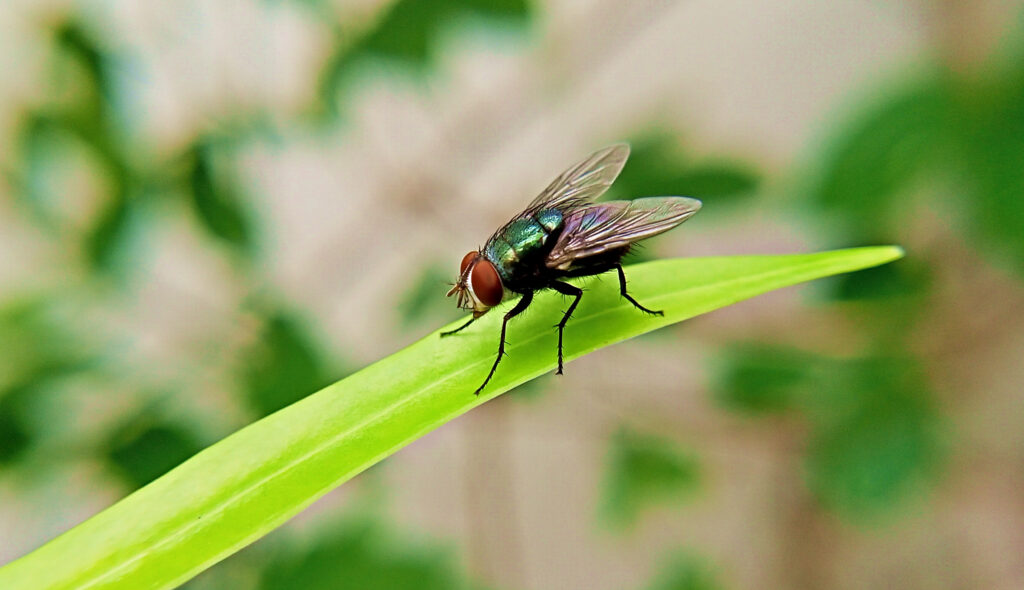
Common Signs:
- Multiple flies in the house (specifically, the kitchen)
- Eggs in overripe fruit or trash
- Dead flies around the home
- Flies hovering around fruit or other food on the counters
- Multiple flies in the garbage
Typical Pests: houseflies, fruit flies, drain flies, horse flies
One lone fly buzzing around the kitchen isn’t a big deal, but a whole group of flies circling the trash can is not a coincidence. Different fly species lay their hundreds of eggs in trash, animal waste, or overripe fruit in order to give their offspring a direct food source. The main risk with flies is contamination from their bacteria-laced bodies. Houseflies walk all over their food because their taste receptors are on their feet. This means that any pathogens and bacteria on their bodies are now on your dinner plate! The easiest way to prevent flies is to keep a clean kitchen, so make sure to take out the trash and wash dirty dishes regularly.
Garden Insects
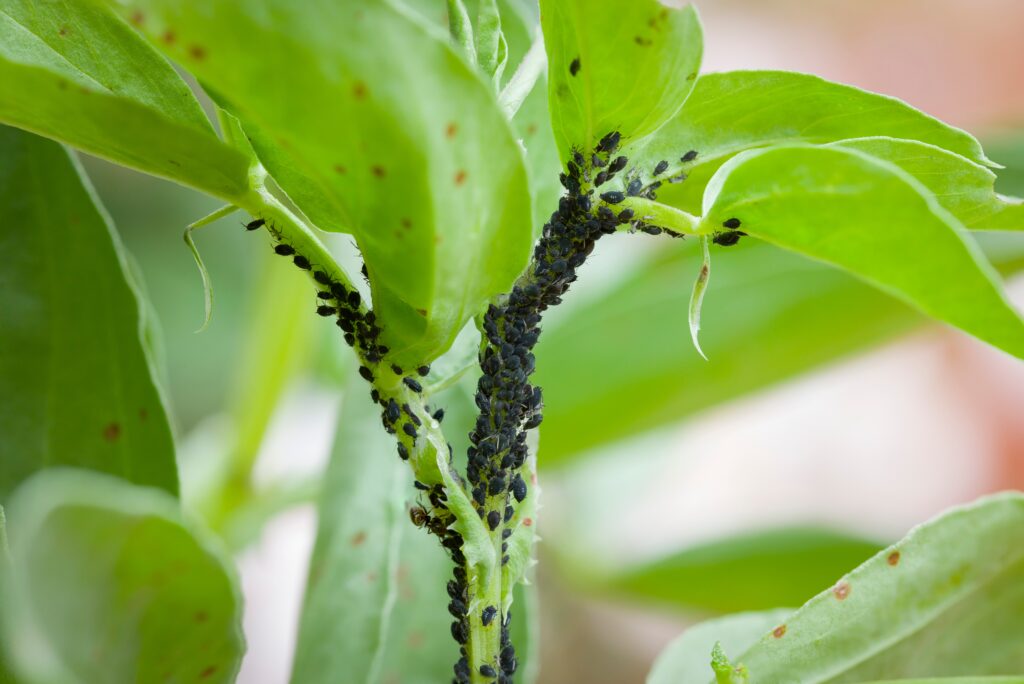
Common Signs:
- Tiny holes in leaves
- Ragged edges on leaves
- Discolored or silvery leaves
- Wilting leaves
- Prematurely rotten or wilted fruits
Typical Pests: thrips, aphids, caterpillars, spider mites, slugs, snails, cutworms, stink bugs
The good news about garden pests is they prefer to stay outside, but the bad news arises when you have a full garden of beautiful plants in your backyard! Most garden pests are easy to miss unless you’re looking for them, as they’re usually small and well-hidden. Some insects, like stink bugs and aphids, stay on the leaves and drink the plant’s sap. Others, like cutworms and snails, live near the plant’s base and feed from the stem and roots. Garden pests can ruin any garden over time. If they’re not removed, even the healthiest of plants won’t survive an army of insects drinking their vital juices every day.
All Household Pests Need Romney
No matter which pest issue you’re facing, Romney Pest Control is always here to help! Our licensed technicians take the time to properly inspect your property for all signs of pest activity, then use their findings to create a treatment plan customized to solve your pest problems. We are happy to address every question and concern you have along the way, as we want you to feel completely comfortable with the services being done in your home. To learn more about our thorough treatments that combat all household pests, contact us today!
Citations
Common urban pests: Identification, prevention, and control. (2011, September 1). PSU Extension. Retrieved September 20, 2024, from https://extension.psu.edu/common-urban-pests-identification-prevention-and-control
Harney, C. (2024, August 14). The essential guide to pantry pests. Pointe Pest Control. Available at https://pointepest.com/the-essential-guide-to-pantry-pests/ (Accessed on September 20, 2024).
Inman-Murphy. (2020, June 16). Buggin’ out: How to identify different types of pests like a pro. Inman-Murphy. Available at https://inman-murphy.com/identify-memphis-pests/ (Accessed on September 20, 2024).
Sisk, A. (n.d.). Identifying insect pests. HGTV. Available at https://www.hgtv.com/outdoors/gardens/planting-and-maintenance/identifying-insect-pests (Accessed on September 20, 2024).
What is the difference between a rat and a mouse?. (n.d.). Rentokil. Retrieved September 20, 2024, from https://www.rentokil.co.uk/mice/rats-vs-mice/

